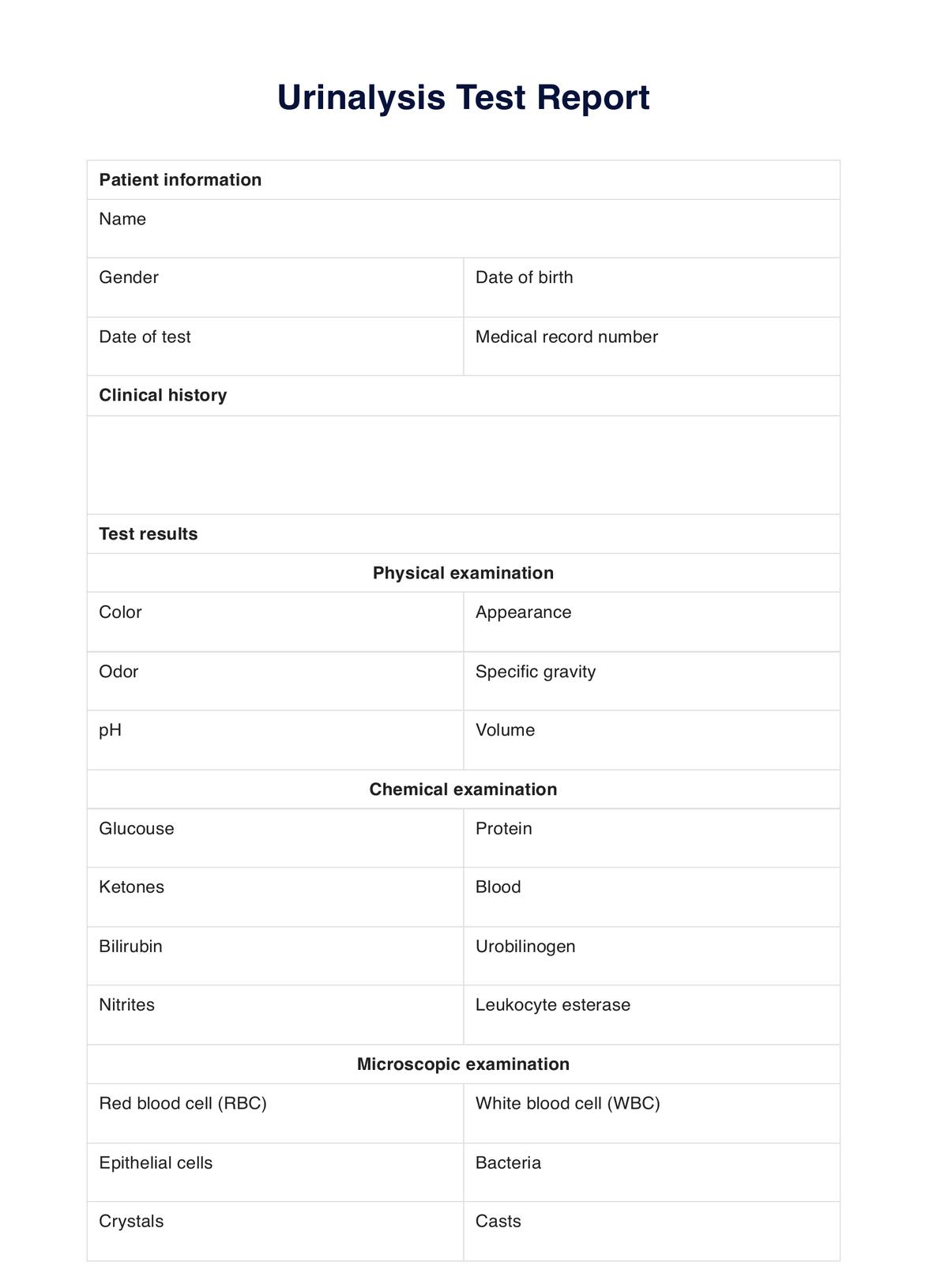The frequency of Urinalysis testing depends on the patient’s health status and risk factors. For those with chronic conditions like diabetes or kidney disease, regular Urinalysis tests may be part of routine monitoring. For others, it may only be necessary during annual check-ups or when symptoms suggest a potential issue.

Urinalysis
Optimize your Urinalysis workflow with our Urinalysis test report template PDF.
Urinalysis Template
Commonly asked questions
Urinalysis effectively detects urinary tract infections and can reveal signs of kidney infections, but it may not detect all types of infections in the body. Analyzing a urine specimen provides comprehensive diagnostic insights, including cellular elements in urinary sediment and abnormalities indicating infections or other medical conditions. If an infection is suspected outside the urinary system, additional tests may be required to diagnose the condition accurately.
If a Urinalysis reveals abnormal results, such as with urinary nitrates and increased squamous epithelial cells, following up with further testing or diagnostic procedures is important to identify the underlying cause. Depending on the findings, this could involve blood tests, imaging studies, or specialist referrals to ensure an accurate diagnosis and appropriate treatment.
EHR and practice management software
Get started for free
*No credit card required
Free
$0/usd
Unlimited clients
Telehealth
1GB of storage
Client portal text
Automated billing and online payments











